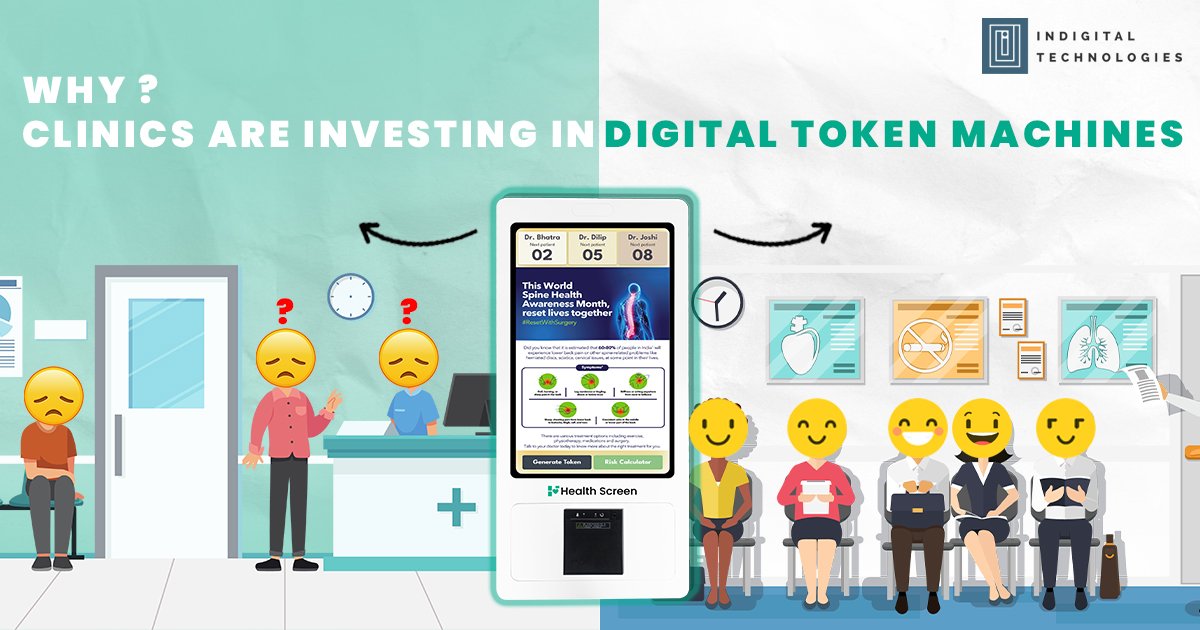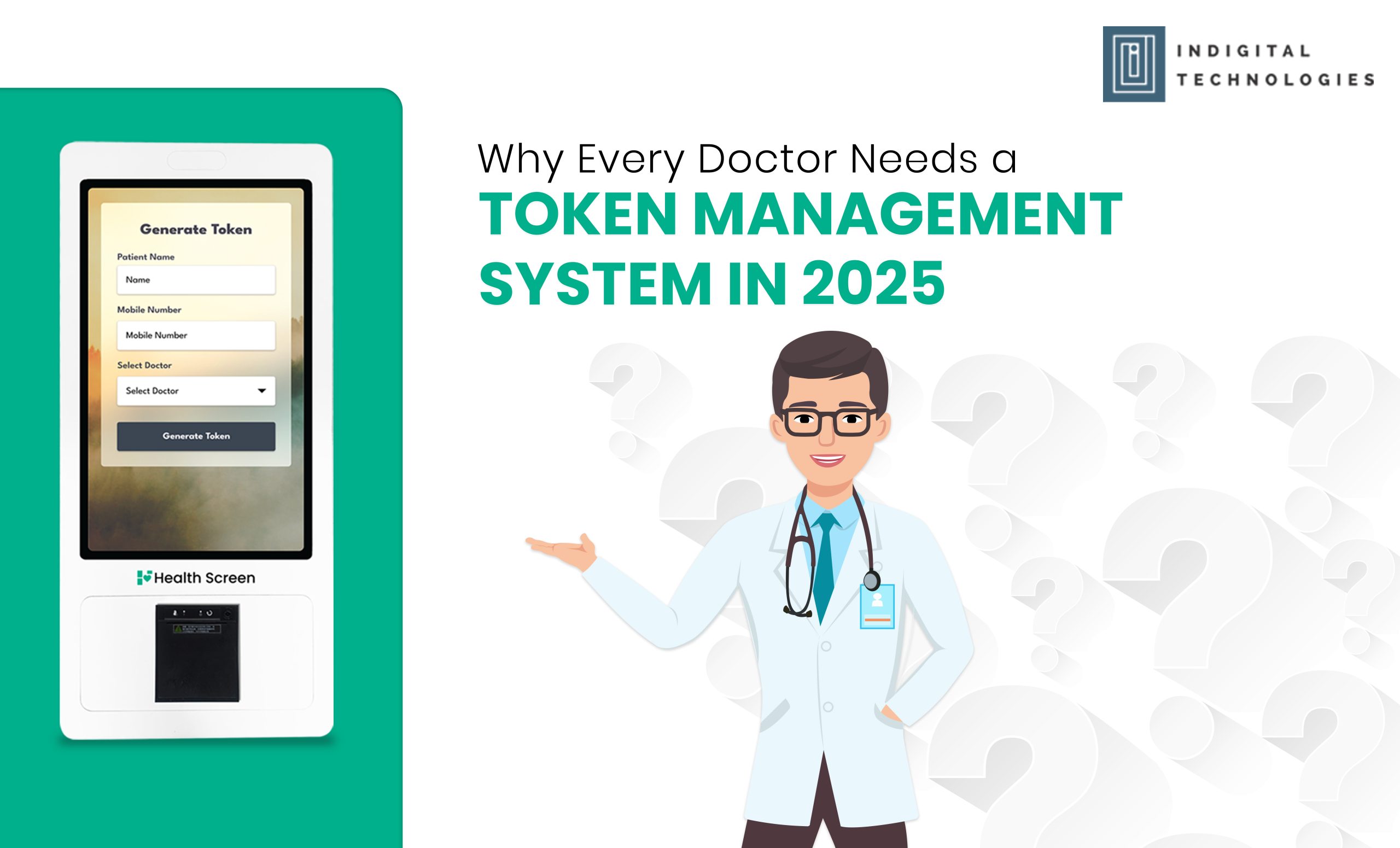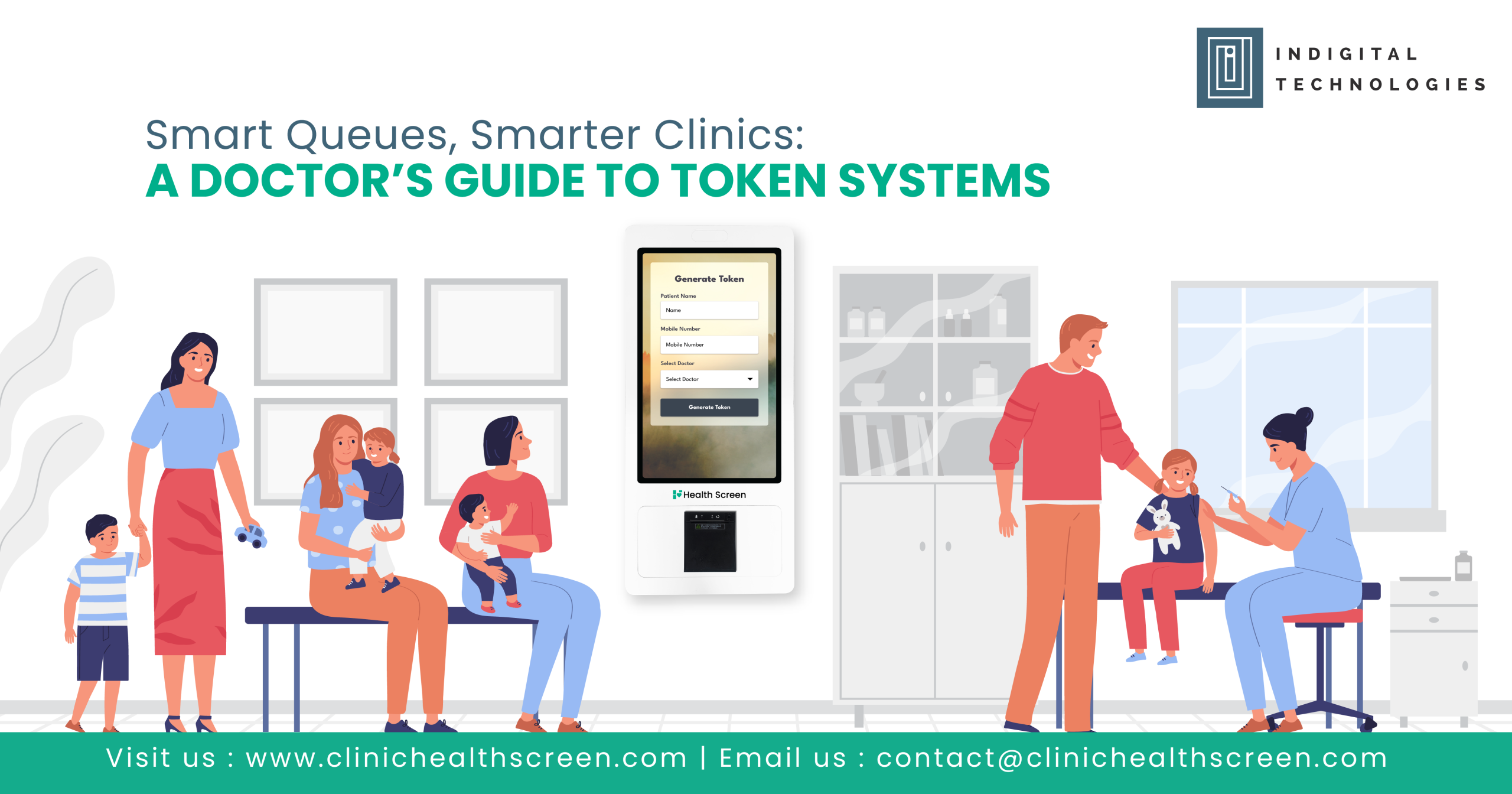Efficient patient flow is the heartbeat of a successful clinic. When managed well, it leads to reduced wait times, better doctor-patient interactions, higher satisfaction rates, and a calmer clinic environment. Yet in many Indian clinics, especially OPDs and diagnostic centers, managing patient flow remains a daily challenge.
One of the simplest yet most impactful ways to optimize this process is by implementing a clinic token system — a digital solution that structures the movement of patients from arrival to consultation and beyond. This blog explores how such systems improve patient flow, reduce clinic chaos, and enhance the overall healthcare experience.
Why Patient Flow Matters
Before diving into how token systems help, let’s understand why patient flow is so critical:
- Minimizes waiting room congestion
- Improves doctor efficiency and consultation pacing
- Reduces confusion at reception
- Helps prioritize critical patients
- Elevates overall patient satisfaction
Poor patient flow leads to longer wait times, stressed staff, and frustrated patients — a recipe for inefficiency and reputational damage.
What Is a Clinic Token System?
A token management system is a digital solution that assigns patients a numbered token upon check-in and systematically calls them for consultation or services. Modern systems may use:
- Kiosks or QR code-based check-ins
- Digital displays showing token status
- SMS alerts or app notifications
- Doctor dashboards to manage flow
- Integration with EMRs and billing systems
It automates the queue, eliminates manual calling, and introduces predictability in movement — which is especially useful in high-footfall clinics.
Key Ways a Token System Improves Patient Flow
1. Structured Queue Management
Instead of a crowd at the reception desk or patients repeatedly asking “When is my turn?”, a token system creates an orderly, first-come-first-serve queue. Patients are issued numbers upon arrival and are called in sequence or priority.
Benefits:
- Clear turn-taking process
- No favoritism or line-jumping
- Reduced reception stress
2. Real-Time Display & Communication
A good token system updates patients in real time:
- Showing current token being served
- Estimated waiting time
- Alerts for “You’re next”
This transparency reduces patient anxiety, encourages them to stay nearby, and makes the clinic environment calmer and more predictable.
3. Doctor-Level Control & Prioritization
Doctors can use the backend system to:
- See a live queue of waiting patients
- Prioritize emergency cases
- Delay or pause the queue if needed
This flexibility allows doctors to balance quality care with efficiency, especially when consultations vary in complexity.
4. Reduced Idle Time for Staff and Doctors
When patient flow is automated, reception staff spend less time managing queues manually. Doctors don’t waste time waiting for the next patient or calling out names.
The result:
- Less time wasted per patient
- Higher consultation throughput
- Improved punctuality throughout the day
5. Multichannel Check-Ins for Faster Onboarding
Patients can check in using:
- A receptionist’s computer
- Self-service kiosks
- QR code scans at the door
- Mobile app links
By removing single-point congestion, onboarding becomes faster, especially during peak hours.
6. Minimized Overcrowding in Waiting Areas
Token systems allow clinics to space out patient arrivals and limit overcrowding. When paired with estimated wait times, they encourage patients to arrive closer to their consultation time.
This is especially useful in:
- Small clinics with limited space
- Multi-doctor setups
- Pediatric or elderly care clinics where waiting is more stressful
7. Better Coordination Across Departments
In multi-service clinics — e.g., where lab, pharmacy, and consultation coexist — a token system allows departments to:
- Call patients in sync
- Share token numbers
- Reduce unnecessary back-and-forth for patients
It ensures the patient moves seamlessly through each step.
8. Automated Feedback Collection After Visit
Some token systems include post-visit surveys triggered after the consultation is marked as complete. This feedback loop helps clinics:
- Understand patient satisfaction
- Identify wait-related complaints
- Continuously refine the flow
It also adds value to pharma partners offering co-branded engagement solutions.
Features to Look for in a Token System
When choosing a token system to improve flow, prioritize platforms that offer:
| Feature | Why It Matters |
| Real-time display | Keeps patients informed and calm |
| Multi-channel check-in | Reduces congestion at a single point |
| Doctor dashboard | Allows flexible consultation control |
| Mobile/SMS alerts | Encourages timely presence |
| Analytics dashboard | Helps track flow patterns and optimize resources |
| Multi-location/multi-doctor support | Useful for group practices |
| Regional language support | Enhances accessibility for diverse patients |
Case Scenario: Before and After Token Implementation
Before Token System
- Patients crowd around reception
- No idea who’s next
- Delays in calling the next patient
- Patients leave due to long, uncertain waits
- Reception overwhelmed during rush hours
After Token System
- Patients take tokens at check-in or online
- Displays show live queue status
- SMS alerts prompt patients before their turn
- Reception staff stay calm and efficient
- Doctors maintain consultation pace
- Patient satisfaction scores improve
Who Benefits from Token Systems?
- Doctors: More structured workflow, better time management
- Reception Staff: Fewer patient queries, automated queue handling
- Patients: Reduced anxiety, shorter and clearer wait times
- Pharma Managers: Better branding opportunities via in-clinic displays
- Clinic Owners: Improved efficiency, higher footfall handling
Practical Tips for Successful Implementation
- Start with a trial in one department or with one doctor
- Train staff to use and explain the system to patients
- Ensure visibility of token displays in the clinic
- Customize messages and alerts to match clinic tone
- Collect feedback post-implementation to fine-tune flow
Conclusion
In a healthcare system where time is precious and patient experience defines loyalty, a token system offers an elegant, scalable solution to one of the oldest challenges — managing patient flow.
By creating structure, improving communication, and automating common friction points, a token system transforms the way clinics function. Whether you’re a single-doctor practice or a multi-specialty OPD center, the impact is immediate and measurable — in time saved, stress reduced, and satisfaction earned.





